The crypto industry has many currencies, including Bitcoin, Ethereum, Dogecoin, and Tether. It is essential to first look at the top 10 cryptocurrencies that have been analyzed mainly by considering their market capitalization to make entry easy into this rather complex environment.
The market cap for the top ten cryptos determines how healthy the market is, on average, in general terms. The most important one here is Bitcoin, the digital gold that still holds the leading position by far in market capitalization, proving tough and unbeatable. Leading in innovation is Ethereum, which has intelligent contracts capabilities that are well known.
On the other hand, there are altcoins such as Dogecoin, whose community-based memes can be used for specific purposes, and Tether, a stablecoin connected with traditional currencies.
1. Bitcoin (BTC)
- Market cap: $708.7 billion
The first cryptocurrency, known as Bitcoin (BTC), was developed in 2009 by Satoshi Nakamoto. BTC operates on a blockchain, a ledger that records transactions dispersed over a network of thousands of computers, just like most other cryptocurrencies. Bitcoin is protected from scammers because updates to the distributed ledgers need to be validated through the solution of a cryptographic puzzle known as proof of work.
Peer to Peer: Bitcoin functions on a peer-to-peer decentralized network hence, no one controls it since there are no masters that command it. The transactions are confirmed by network nodes using cryptography recorded in a distributed public ledger called the blockchain.
Blockchain Technology: Blockchain is an open and immutable registry holding a trace of all Bitcoin transactions. The blockchain consists of blocks where each block includes a collection of transactions, and as soon as a block gets full, another one is successively added on top. This results in a chain of blocks, which is why it is called “blockchain.”
Mining: Miners use computer hardware that can solve challenging math problems for verifying Bitcois transactions. For instance, once the issue of a block is cracked, a new block internship is added to the chaise n, and the miner gets newly created bitcoins as an award. Obtaining Bitcoins through this procedure is called mining and is critical in safeguarding the Bitcoin network.
Limited Supply: There are only 21 million bitcoins supplied. Its code mirrors the scarcity of precious metals such as gold, making it scarce by construction. The fixed supply is meant to suppress price increases or devaluation of the currency.
Wallets: Users require a virtual wallet to keep and regulate their bitcoins. There are two types of wallets, including software like online, desktop, or mobile apps and hardware, which is a physical device. Each of these Wallets has a private key, secret information used to control bitcoins.
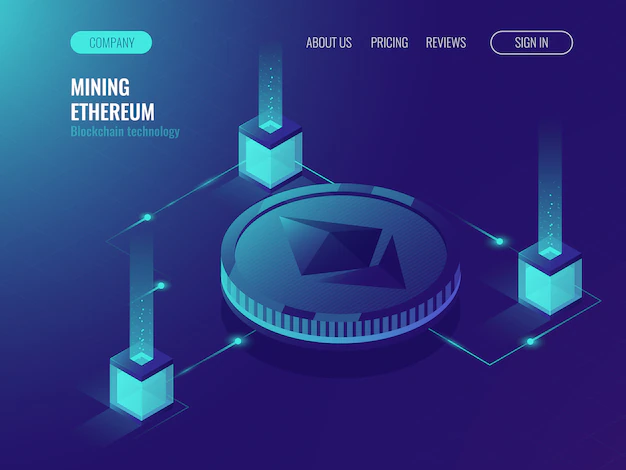
2. Ethereum (ETH)
- Market cap: $246.2 billion
Ethereum is a decentralized distributed ledger technology where software developers and organizations can build decentralized applications and execute smart contracts. Vitalik Buterin put forth this idea at the end of 2013, and it came into being on 30 July 2015. Ethereum is not just a cryptocurrency like Bitcoin; it’s a platform that allows developers to build decentralized applications (DApps) on its blockchain.
Smart Contracts: Ethereum made up the intelligent contract idea and consists of an electronic contract in which all contractual conditions are written into code. Such executions occur once certain circumstances have been set and defined in advance.
However, smart Contracts make Decentralized Applications possible, spanning most industries, such as finance, supply chain, games, etc.
Ether (ETH): As the native cryptocurrency for the Ethereum network, Ether has been utilized as payment and reward by network users. Here, it acts as a reward pay for computational work that participants do and also serves to verify network transactions. Validators get Ether as their reward system to ensure the network’s security, miners, or Ethereum 2.0.
Decentralized Autonomous Organizations (DAOs): A decentralized Autonomous Organization (DAO) can be built on Ethereum, meaning a person less entity is governed by programming rules known as code. The rules and decision-making processes are defined by DAOs using smart contracts on Ethereum.
Decentralized Applications (DApps): Ethereum provides a shared space where developers can create decentralized apps. The applications use a decentralized peer-to-peer network that connects computers (nodes).
Ethereum 2.0 and Proof of Stake: Ethereum is undergoing a major upgrade known as Ethereum 2.0 or ETH 2.0. One of the significant changes is the transition from a proof-of-work (PoW) consensus mechanism to a proof-of-stake (PoS) mechanism. This change aims to improve scalability, security, and energy efficiency.
Ethereum has grown astronomically as well. Its price increased 18,511% between April 2016 and the end of November 2023, from almost $11 to about $2,047.
3. Tether (USDT)
- Market cap: $87.1 billion
Tether (USDT) is a type of cryptocurrency known as a stablecoin. Unlike most cryptocurrencies, the value of Tether is pegged to the value of a traditional fiat currency, typically the US Dollar (USD). The primary purpose of Tether is to provide the benefits of a cryptocurrency, such as fast and borderless transactions while maintaining a stable value equivalent to a specific fiat currency.
Stablecoin Concept:
Tether falls under the classification of a stable coin meant to suppress price fluctuation that characterizes Bitcoin and Ethereum currencies. However, stability is realized through the pegging of the Tether against the reserve of traditional fiat money.
Pegging to Fiat Currency:
The most common version of Tether, USDT, is pegged to the US Dollar at a 1-1 ratio. It implies that for every US dollar backing Tether Limited (the firm behind USDT), one USDT should circulate in the market.
Tether Issuance and Redemption:
The company issues the Tether Limited tokens and purchases them back from those interested in acquiring USDT. These tokens are mainly sold on exchanges, but some traders also have them for sale privately. Similarly, Tether can be redeemed for US dollars through Tether Ltd. This process is intended to maintain the 1 One-coin unit for each US dollar.
Blockchain Platforms:
It can be found in various blockchains. It commenced initially as an Omni Layer protocol based on the Bitcoins blockchain through the Omni Protocol. Nevertheless, the currency known as Tether is now found across many blockchains such as Ethereum ERC-20 token, Tron’s TRC-20 token, etc.
Use in Cryptocurrencies Trading:
Tether is often regarded as one of the most popular stores of value for cryptocurrencies. During times of volatility, traders can turn their unstable digital assets into Tether to guard themselves against price deviations. Commonly, this is known as “trading into USDT.”
4. Binance Coin (BNB)
- Market cap: $37.2 billion
Binance Coin (BNB) is the native cryptocurrency of the Binance exchange, one of the world’s largest and most popular cryptocurrency exchanges. BNB was initially created as an ERC-20 token on the Ethereum blockchain during Binance’s initial coin offering (ICO) in July 2017. However, BNB has since migrated to Binance’s own blockchain, known as Binance Chain.
Binance Exchange Utility:
BNB had initially been built for paying trading commissions with a discount on the platform of the exchange Binance. Such users can receive a substantial reduction on the trading fees by simply paying them in their BNB tokens.
Binance Chain:
For instance, in April 2019, Binance launched its own blockchain, the Binance chain that facilitated migration of BNB tokens from Ethereum’s blockchain to its new native blockchain. This helped Binance gain more power over the token and the features it had.
Use Cases:
BNB has expanded beyond its original use case and is now used for various purposes:
Trading Fee Discounts: However, BNB remains a utility token in terms of offering reduced-rate trading fee service through the Binance exchange.
Payments:
It also functions in several e-commerce websites, as well as some retailers.
Staking and Delegated BFT: BNB (Binance coin) has a major involvement in the Binance chain’s consensus mechanism, where users stand to earn rewards for staking their BNB in order to produce chains / blocks and governance.
Burns and Supply Reduction:
Binance performs occasional token burns through which some amount of BNB tokens and sent to a bin where they are destroyed. This process decreases the total BNB supply, potentially making it scarcer over some period.
Community and Ecosystem:
The BNB possesses an energetic and thriving community. BNB goes beyond its use on the Binance exchange and extends to most other applications, wallets, and services of the generalized crypto asset sphere.
BNB’s price in 2017 was just $0.10. By late Nov 2023, its price had risen to around $245, a gain of 244,931%.
5. XRP (XRP)
- Market cap: $35.2 billion
XRP is the native cryptocurrency of the Ripple network, which is designed to facilitate fast and low-cost cross-border transactions. Ripple Labs, the company behind the Ripple network, aims to enable secure, instant global transactions with its technology.
Digital Currency and Network:
XRP is both a digital currency (cryptocurrency) and a network. The Ripple network is a distributed ledger technology that securely and efficiently transfers value between parties.
Cross-Border Payments:
One of the primary use cases for XRP is facilitating cross-border payments. The traditional international payment system can be slow and costly, involving multiple intermediaries and taking several days to settle. Ripple aims to address these issues by providing a faster, more cost-effective alternative.
Consensus Protocol:
Ripple uses a unique consensus algorithm called the XRP Ledger Consensus Protocol to validate and confirm transactions. Unlike proof-of-work (PoW) used by Bitcoin or proof-of-stake (PoS) used by some other cryptocurrencies, Ripple’s consensus mechanism is designed to be more energy-efficient and scalable.
XRP Ledger:
The XRP Ledger is the underlying decentralized blockchain that records all transactions on the Ripple network. It is maintained by a network of independent validators that reach consensus to agree on the order and validity of transactions.
Escrow and Supply Control:
To manage the supply of XRP and instill confidence in users, Ripple Labs placed a significant portion of XRP into escrow. The escrow system releases a specific amount of XRP periodically, which helps prevent large amounts of XRP from flooding the market at once.
Open Source and Interoperability:
Ripple’s open-source technology allows developers to build on top of the XRP Ledger and integrate it into various applications. The network is designed to be interoperable with existing financial systems, providing a bridge between traditional banking infrastructure and blockchain technology.
Partnerships with Financial Institutions:
Ripple has entered into partnerships with various financial institutions and banks worldwide. Some institutions use Ripple’s technology, such as the RippleNet, to enhance cross-border payment services.
Regulatory Considerations:
XRP, like other cryptocurrencies, operates within a regulatory framework. Regulatory developments can impact the use and adoption of XRP, and the status of XRP as a security has been a topic of discussion and regulatory scrutiny.
6. U.S. Dollar Coin (USDC)
- Market cap: $24.0 billion
USDC is a typical stablecoin or cryptocurrency having fixed rates against standard fiat currency, in other words, dollar. A cryptocurrency that runs in the Ethereum blockchain and is issued and supervised by authorized financial institutions operating as an ERC-20 token and more than one blockchains are available for use.
Stablecoin Concept:
USDC is a stablecoin designed to maintain a 1: 1 peg with a US dollar. The objective will be to realize the gains of cryptocurrencies, such as speedy and boundary-free transfers, while simultaneously addressing the high level of uncertainty surrounding other cryptos, such as Bitcoin.
Regulated Issuers:
USDC is an electronic dollar released by recognized money issuers or firms responsible for AML/KYC policies. Regulatory compliance is necessary to ensure transparency and accountability in the stablecoin ecosystem.
Ethereum-Based Token:
Initially, USDC was a token created using the ERC-20 technology, which operates on the Ethereum Blockchain. Therefore, it is simple to include it in the prevailing Ethereum-centered DApps and smart contracts.
Transparency and Audits:
To keep trust with users, issuers of USDC usually audit this reserve regularly to ensure they have enough USD for existing USDC supplies. Users need this transparency to confirm that the stablecoin has been fully collateralized.
Cross-Border Transactions:
USDC promotes fast and affordable cross-border transactions. It enables people to transfer USDC worldwide as an equivalent of cross-border money transfers.
Use in DeFi and DApps:
Decentralized finance, lending platforms, and many DeFi applications use USDC within the different blockchain-based financial services. Given its stable nature, it is preferred by most users to other volatile cryptocurrencies used in blockchain financial operations.
7. Solana (SOL)
- Market cap: $23.8 billion
Solana (SOL) is a high-performance blockchain platform designed for decentralized applications (DApps) and cryptocurrency projects. It aims to provide fast, secure, and scalable solutions to address some of the challenges faced by other blockchain networks, particularly in terms of transaction speed and cost.
Proof of History (PoH):
Solana provides a unique idea, called Proof of History (PoH), which enables optimization of the consensus mechanism. Validators can quickly agree on the order and authenticity of transactions because it maintains a historical record of transactions prior to their addition to a block.
Proof of Stake (PoS):
The consensus mechanism utilized by Solana is proof-of-stake, with these validators being selected based on the size of their tokens and willingness to lock them up as “collateral”. By this, security is improved as compared to the PoW employed in network like Bitcoin.
Token (SOL):
SOL, the native cryptocurrency of the Solana blockchain. It has many applications such as staking, involvement in the network’s ruling among other things and transaction costs payment. Thus, SOL is an important part of enhancing security and motivating stakeholders on this platform.
SOL’s initial price at launch in 2020 was $0.77. By late November 2023, the price had increased by 7,224% to approximately $56.40.
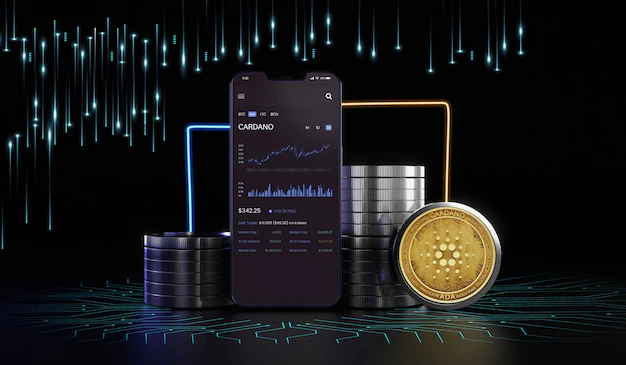
8. Cardano (ADA)
- Market cap: $13.0 billion
Cardano (ADA) is a blockchain platform that aims to provide a more secure and scalable infrastructure for the development of decentralized applications (DApps) and smart contracts. It was founded by Charles Hoskinson, one of the co-founders of Ethereum, and developed by Input Output Hong Kong (IOHK).
Ouroboros Proof-of-Stake Consensus:
The proof-of-stake (PoS) consensus known as Ourobourus is what the crypto uses. A Proof-Of-Stake system selects validators (or “stakeholders”) among holders of Cryptocurrencies that they are ready to stake as security. The Ouroboros is known to be highly reliable, energy efficient as well as capable of scaling up.
ADA Cryptocurrency:
This is the cryptocurrency that exists on the cardano platform and is called as ADA. This coin can be used for various things like staking, voting on some matters, or transaction fees.
Layers:
It has a layered structure that separates the ledger from the computational layer. With this design it is possible to have flexible, scalable, and easy upgrade.
Compared Cardano’s ADA token to other famous crypto coins, its rise has been somewhat slow. The cost of ADA was $0.02 in 2017. Its price was $0.37 on Nov 14, 2023. It represents a 1,738% rise.
9. Dogecoin (DOGE)
- Market cap: $10.5 billion
Dogecoin is a cryptocurrency that was created in late 2013 by software engineers Billy Marcus and Jackson Palmer. It was named after a popular internet meme featuring a Shiba Inu dog. Dogecoin is a peer-to-peer, open-source cryptocurrency that runs on its own dedicated blockchain. It is considered an altcoin and was launched as a lighthearted alternative to traditional cryptocurrencies like Bitcoin.
Furthermore, unlike Bitcoin, which was designed to be scarce, Dogecoin is intentionally abundant, with 10,000 new coins mined every minute and no maximum supply. Dogecoin gained cult status on Reddit’s WallStreet Bets message board in early 2021, where enthusiasts had promised to propel its value “to the moon”. Tesla CEO Elon Musk was at least partially responsible for the massive growth after calling Dogecoin his favorite cryptocurrency.
Yet, by May 2021, Dogecoin climbed to a peak of $0.68, a remarkable increase from its starting price of less than a penny that year. Following this, Dogecoin’s worth plunged drastically, hitting a low point near $0.05 in June 2022.
10. TRON (TRX)
- Market cap: $9.4 billion
Similar to Solana, TRON functions as a blockchain tailored for executing smart contracts and various decentralized finance (DeFi) applications. The native cryptocurrency of the platform is TRX, playing a pivotal role in fueling its proof-of-stake consensus algorithm.
Established in 2017, TRON saw its initial token, TRX, priced at $0.0019. Experiencing a remarkable surge, TRX reached its peak in 2018, soaring to $0.2245, marking an extraordinary gain of 11,715% within a few months. As of now, TRX is valued at approximately $0.11.
*Market capitalization and pricing details are derived from Forbes advisor.com and are current as of 4:20 p.m. UTC on Nov. 18, 2023.
What Are Cryptocurrencies?
Cryptocurrencies are online-based money that uses code for protection and functions on scattered networks built on blockchain technology. Unlike conventional money provided by governments and central banks, Cryptocurrencies use a shared record, usually a blockchain, to log and confirm transactions.
Related Reading| What is Bitcoin: The First Digital Money
The author’s views are for reference only and shall not constitute any investment advice. Please ensure you fully understand and assess the products and associated risks before purchasing.
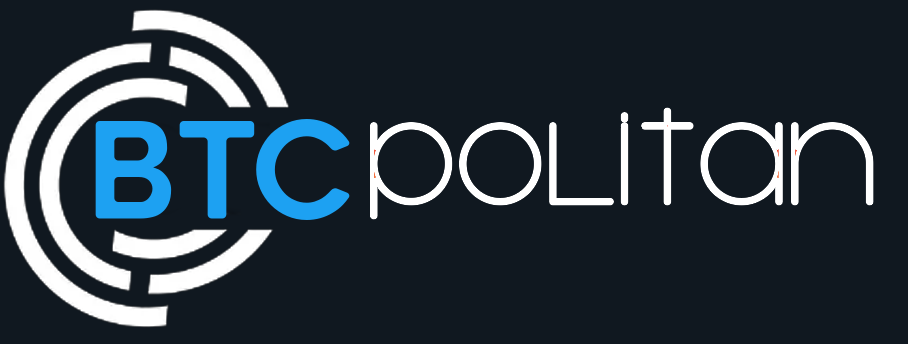
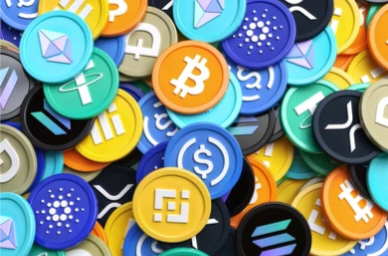
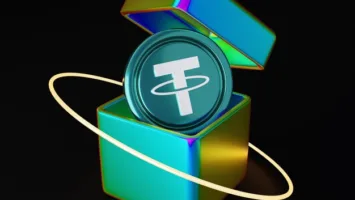
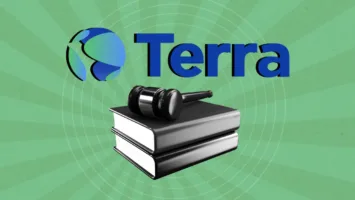
Comments (No)